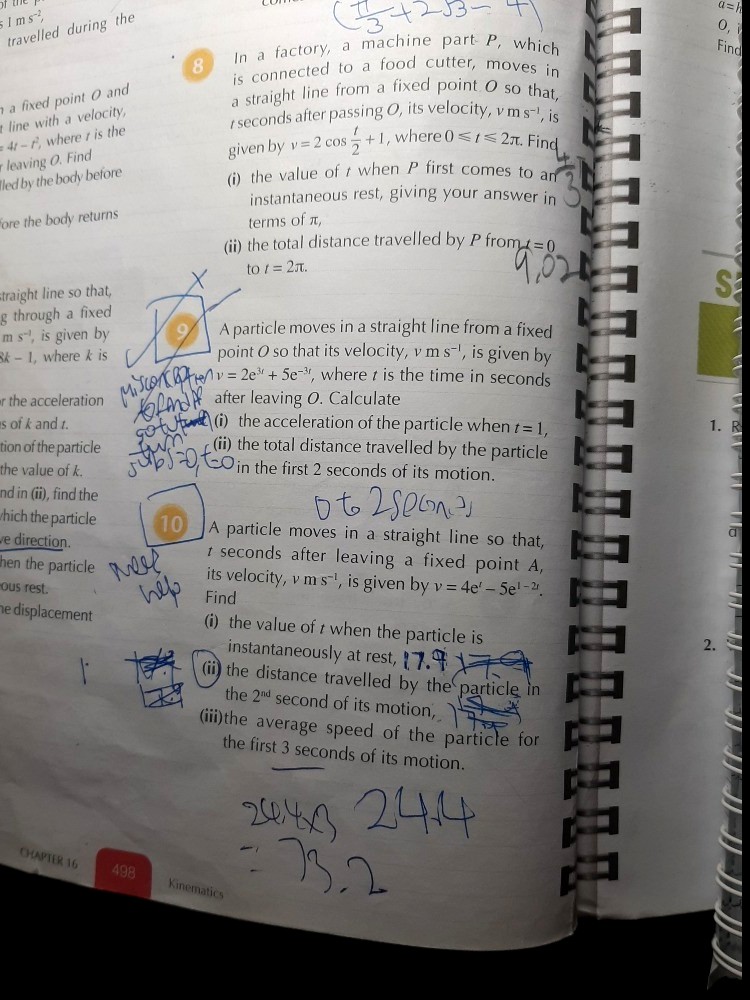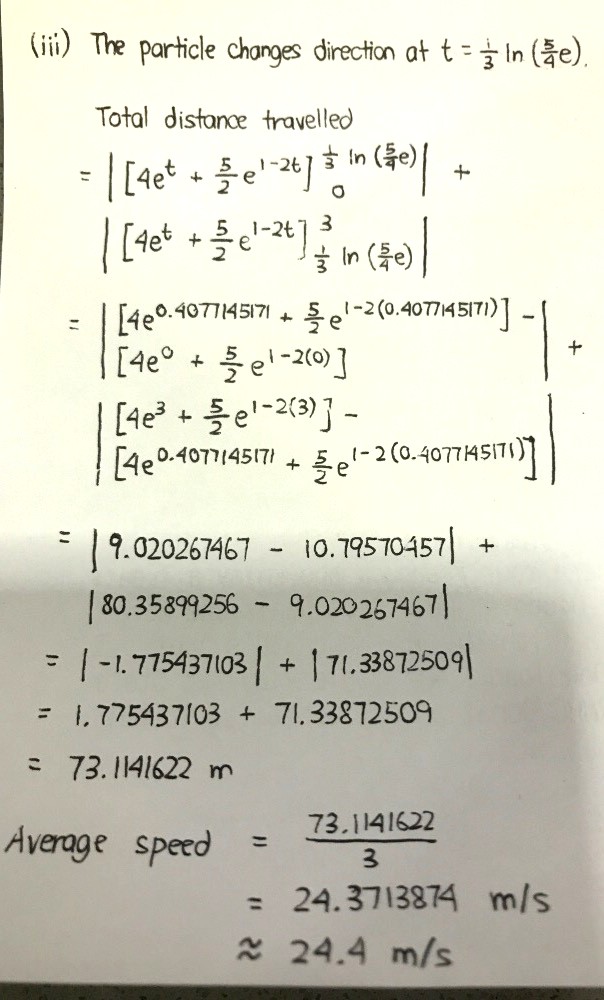Ask Singapore Homework?
Upload a photo of a Singapore homework and someone will email you the solution for free.

See 2 Answers
done
{{ upvoteCount }} Upvotes
clear
{{ downvoteCount * -1 }} Downvotes
Good evening Annela! Here are my workings for the first two parts.
Date Posted:
4 years ago
Why is it wrong to do this
When x= 3 , velocity=
When x =2 , velocity =
Do the rest when x1 and x=4
Sum up all velocity divide by 4
When x= 3 , velocity=
When x =2 , velocity =
Do the rest when x1 and x=4
Sum up all velocity divide by 4
For part (iii)
Good afternoon Annela! The first three seconds of motion represents the motion of the particle from t = 0 to t = 3, and not t = 1 to t = 4.
Now, there is a difference between instantaneous velocity and average velocity. What we would be calculating when t = 0, t = 1, t = 2 and t = 3 would be considered as instantaneous velocity (the velocity at that specific point of time). Their average does not really mean much.
Imagine for example, I accelerate my car quickly from rest at t = 0 all the way to t = 0.999 with the view of intentionally crashing my car (and the car’s speed becomes 0 at t = 1). We cannot say that because v = 0 when t = 0 and v = 0 when t = 1, the average speed would be the average of those values, which would be 0. In actual fact, my car would have travelled some distance in front, so the average speed is definitely not zero.
The more accurate way would be to consider the average speed as the total distance travelled divided by the total time taken, which is the essence of this question. Hence, we have to calculate the total distance travelled for the particle, bearing in mind that the particle very likely turns back to its opposite direction after it obtains an instantaneous speed of 0.
Now, there is a difference between instantaneous velocity and average velocity. What we would be calculating when t = 0, t = 1, t = 2 and t = 3 would be considered as instantaneous velocity (the velocity at that specific point of time). Their average does not really mean much.
Imagine for example, I accelerate my car quickly from rest at t = 0 all the way to t = 0.999 with the view of intentionally crashing my car (and the car’s speed becomes 0 at t = 1). We cannot say that because v = 0 when t = 0 and v = 0 when t = 1, the average speed would be the average of those values, which would be 0. In actual fact, my car would have travelled some distance in front, so the average speed is definitely not zero.
The more accurate way would be to consider the average speed as the total distance travelled divided by the total time taken, which is the essence of this question. Hence, we have to calculate the total distance travelled for the particle, bearing in mind that the particle very likely turns back to its opposite direction after it obtains an instantaneous speed of 0.
Your method would be valid only if the particle travels in the same direction with a constant speed.
This method would not work even for particles moving with a constantly increasing speed, because the distance would have increased exponentially.
This method would not work even for particles moving with a constantly increasing speed, because the distance would have increased exponentially.
done
{{ upvoteCount }} Upvotes
clear
{{ downvoteCount * -1 }} Downvotes
And this is for the third part
Date Posted:
4 years ago
I appreciate your help






